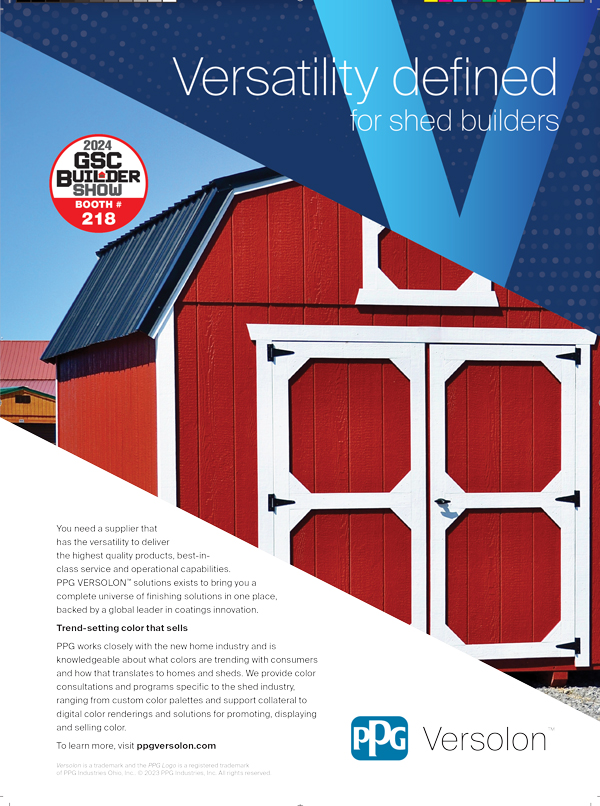Unique identifiers will help track possession, ownership
Until now, the portable shed industry has had no common way to identify a shed. Jeff Huxmann, founder of shed marketplace platform ShedHub, has developed the “SHIN” numbering and tracking system [https://shin.shedhub.com], which is an identification number system to identify and track the ownership of sheds. Huxmann said the system is needed because owners, manufacturers, rent-to-own companies, and shed haulers should be able to track possession and ownership.
How it works is the shed manufacturer assigns a SHIN number, much like a car manufacturer assigns a vehicle identification number (VIN). The SHIN number is coded to include identifying information such as manufacturer, width, height, and date of manufacture. Once that number is created and entered into the system, information can be added to the record that will then be associated with that number, including who owns the shed. That information might also include upgrades, repairs, and other changes from the original manufacture, as well as tracking information that shed delivery drivers can update.
“Sheds may have identifiers from the manufacturer, and sometimes they have a unique ID, but not always,” he continued. “Some manufacturers start the ID numbers over at the beginning of a new year. Sheds really don’t have titles like cars and trailers. But a certificate of ownership might be useful – especially in a rent-to-own situation,” in which the RTO company owns the shed until the last payment has been made. “After that last payment’s made, we can issue a certificate of ownership, like a title.”
“It’s like a Carfax,” Huxmann continued. “Having a universal identifier enables something similar to Carfax, but for sheds.” It’s a universal identifier that Huxmann believes is needed because sheds can be moved from one state to another, shed ownership can be transferred any number of times, and they can get damaged, lost, or stolen. “Rent-to-own companies sell off their contracts to other rent to own companies,” he continued. “There’s no central database to keep track of sheds like there is with vehicles. Rent to own companies can see who really owns a shed. Plus, companies can track their own internal paperwork based on the shed number.”
If a driver delivers a shed, he can call or text a ShedHub phone number and leave a message with the appropriate SHIN number and the appropriate action code. A short code represents a certain action; for example, the code “23” represents delivery to a customer. Then ShedHub will keep a record of that action. “The manufacturer can see that a delivery was made. If there’s an RTO company, they can get a notification it was delivered. And the customer can get service alerts,” Huxmann said.
What’s more, the system can even be accessed by those who don’t have access to the internet. “SHIN numbers only include numbers – not letters – to accommodate low-tech users who may be limited to only using ‘flip’ phones or landline phones. We created it to get everyone in the shed community access to a system that they’re able to use. We want it to be an inclusive platform,” said Huxmann.
There are a limited number of people using the system already. “People seem to really like it because it’s easy,” he said. “You don’t have to download an app can use text messaging and call a phone number.”
According to Huxmann, once the SHIN numbering system is in place, there will be a common way for manufacturers, drivers, sales people, repair men, rent-to-own companies, and others to input and share important information on portable buildings. “Similar to automobiles, portable buildings can have multiple owners and go through multiple finance companies,” Huxmann said. “Yet there is no common system within the industry to record this information, until now.”






















